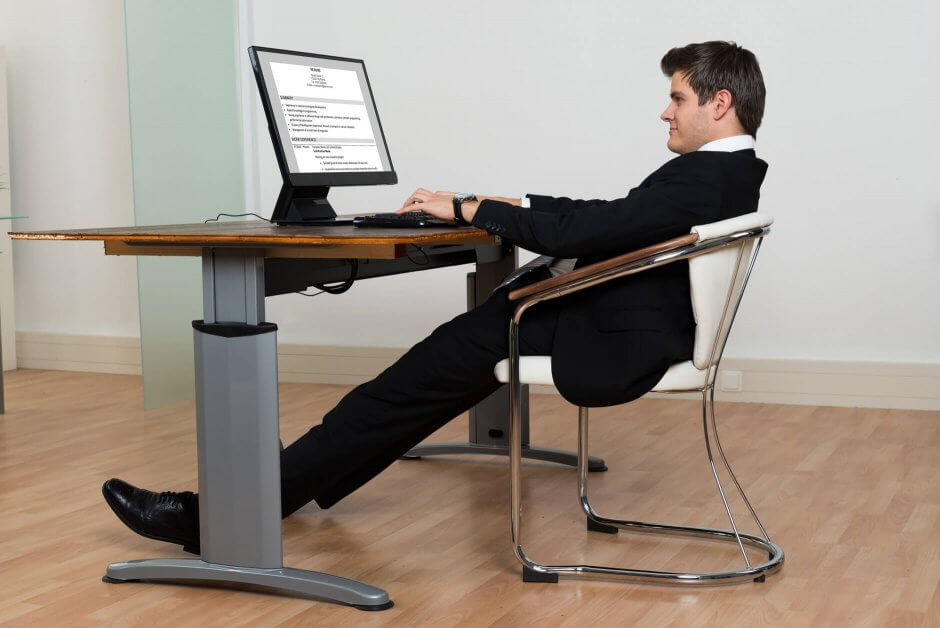

There is currently a big trend towards standing workplaces – after all, sitting for long periods of time now enjoys a bad reputation similar to that of smoking.
It can often be read that standing is extremely important when it comes to preventing work-related illnesses. But how unhealthy is sitting really and what are the advantages of working while standing? The following article explains.
It is undisputed that not only health, but also the psyche and work efficiency suffer significantly when people remain in the same seated position for a period of around eight hours.
In the short term, sitting for too long – and often in the wrong position – results in tense muscles and pain in the joints, especially in the back and neck. Fatigue and headaches are also common.
In the long term, however, sitting for long periods poses even greater risks. Thus the probability of heart cycle illnesses as well as lung and intestine cancer rises by this for instance. The immune system is also significantly weakened. The undesirable side effects also include a shorter life expectancy, a high risk of thrombosis, high blood lipid levels and carpal tunnel syndrome.
If women spend an average of more than six hours a day sitting, their mortality rate is up to 40 percent higher. In turn, life expectancy can be increased by two years if only three hours less per day are spent sitting.
Even during daily working hours, it is therefore very important to ensure more movement. This can be ideally supported with a standing desk. These standing workstations offer numerous convincing advantages.
For example, they significantly relieve the strain on the back. Especially in the area of the shoulders and neck, the daily strain is reduced. However, it is important to stand upright at all times. There should be a right angle between the top of the desk and the back.
It should also not be neglected that more muscles are active when standing. Per week can be burned in such a way whole 630 calories additionally, if the daily sitting is reduced only by three hours.
When sitting, the body bends. When standing, on the other hand, the body is stretched out, allowing the air to flow more freely. Breathing becomes deeper and the organism is supplied with more oxygen. This in turn not only improves work efficiency, but also the general mood.
The blood can also circulate much better when standing. There is no congestion of blood in the lower body, which reduces the risks of certain diseases. The more optimal blood circulation also provides an improvement in cognitive and physical performance. In addition, scientists were able to find out that the cognitive abilities of students who followed their lectures standing during a study turned out better than those of students who continued to study sitting down.
In working life, professional communication is also of great importance. This can also be improved by standing. When standing, the voice is generally more determined and louder, creating a more self-confident impression. The entire appearance appears more competent and dynamic – thanks to the improved acoustics and optimized posture.
The way we consume entertainment has changed dramatically, with Subscription Video on Demand (SVOD) leading…
The Evolution of Inventory Tracking RFID inventory management software is transforming how businesses track, manage,…
The Unexpected Costs of Unprotected Windshields Polaris Ranger windshields protection is more than just a…
Probably one of the best things people do to secure their finances is the purchase…
The iPhone 15 is still a great buy Released in 2023, the iPhone 15 brought…
By Josh Breaker-Rolfe Data security posture management (DSPM) is the rising star of the data…